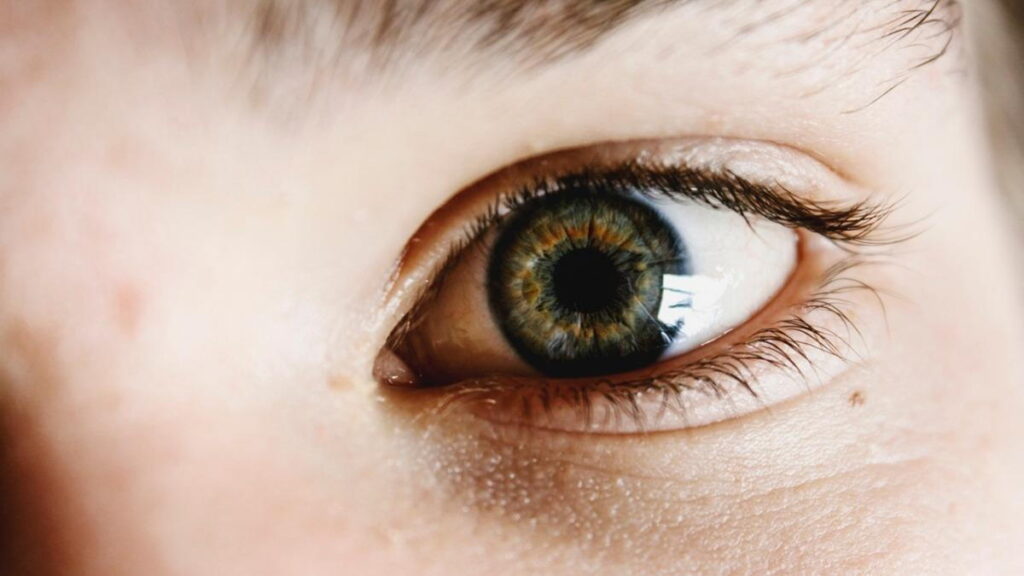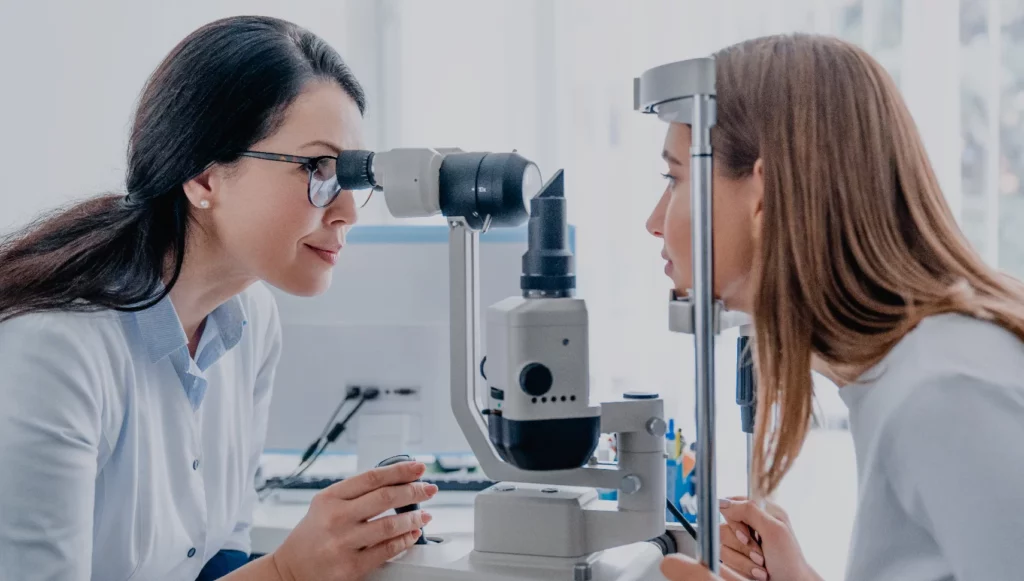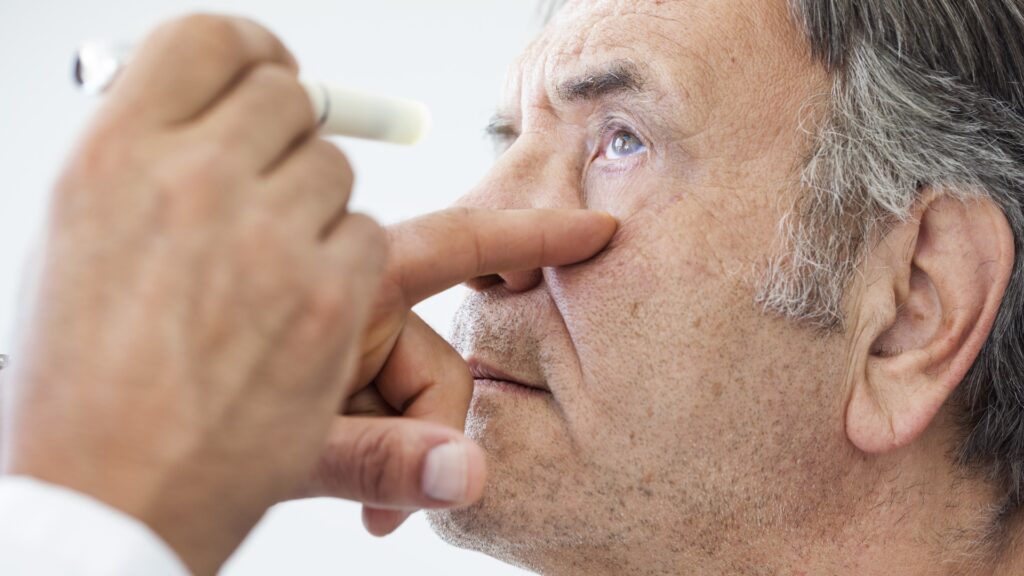Glaucoma is a common eye condition that affects millions of people worldwide. It is characterized by increased pressure in the eye, which can lead to damage to the optic nerve and vision loss if left untreated. Understanding the causes of glaucoma and learning how to manage its symptoms is crucial for maintaining good eye health. In this article, we will explore the common causes of glaucoma and discuss various strategies for managing its symptoms.
Understanding Glaucoma: A Brief Overview
Glaucoma is a complex eye disease that can occur in different forms. However, the underlying cause of all types of glaucoma is the buildup of pressure in the eye, known as intraocular pressure. This pressure can damage the optic nerve, which is responsible for transmitting visual information from the eye to the brain.
While the exact glaucoma causes are still not fully understood, several factors have been identified as contributing to its development.
There are two main types of glaucoma: open-angle glaucoma and angle-closure glaucoma. Open-angle glaucoma is the most common form and develops slowly over time. Angle-closure glaucoma, on the other hand, is a medical emergency and requires immediate treatment.
What is Glaucoma?
Glaucoma is a progressive eye condition characterized by increased pressure in the eye, which can damage the optic nerve. It is often referred to as the “silent thief of sight” because it develops slowly and without noticeable symptoms in the early stages.
The exact cause of glaucoma is unknown, but several risk factors have been identified. These include age, genetics, and certain medical conditions such as diabetes and high blood pressure.

The Impact of Glaucoma on Vision
Glaucoma can have a significant impact on vision if not properly managed. As the condition progresses, it can cause peripheral vision loss, making it difficult to see objects on the sides. If left untreated, glaucoma can eventually lead to tunnel vision and complete blindness.
Early detection and treatment are crucial for preserving vision and preventing further damage to the optic nerve.
Living with glaucoma can present various challenges for individuals. In addition to the physical impact on vision, glaucoma can also have emotional and psychological effects. The fear of losing one’s sight and the uncertainty of the future can cause significant stress and anxiety.
Furthermore, managing glaucoma often involves a lifelong commitment to regular eye examinations and the use of medications or surgical interventions. This can be burdensome for some individuals, requiring adjustments to daily routines and potential financial implications.
It is important for individuals with glaucoma to have a strong support system in place, including healthcare professionals, family, and friends. Education and awareness about the condition can help individuals better understand their diagnosis and treatment options, empowering them to actively participate in their eye care.
By taking proactive steps to manage glaucoma and seeking regular eye care, individuals can minimize the impact of the disease on their vision and overall quality of life.
Identifying the Common Causes of Glaucoma
Glaucoma is a complex eye disease that can be influenced by a combination of genetic, age-related, and environmental factors. Understanding these various elements can provide valuable insights into the prevention and management of this sight-threatening condition.
Genetic Factors in Glaucoma
Research has shown that glaucoma can run in families, suggesting a genetic component to the condition. If you have a family history of glaucoma, you may be at a higher risk of developing the disease yourself. Regular eye exams are especially important for individuals with a family history of glaucoma.
Genetic studies have identified specific gene variations that may increase susceptibility to glaucoma. By unraveling the genetic basis of the disease, researchers are paving the way for personalized treatments tailored to individual genetic profiles. Find more about genetic on https://med.miami.edu/centers-and-institutes/hihg/education-and-training/division-of-genomic-outreach/genetics-awareness-project/what-is-genetics,-q-,
Age and Glaucoma Risk
Age is another significant risk factor for developing glaucoma. As we get older, our risk of developing the condition increases. In fact, glaucoma is one of the leading causes of blindness in individuals over the age of 60. Regular eye exams are essential for older adults to detect glaucoma early and initiate appropriate treatment.
Advancing age is associated with changes in the eye’s drainage system, leading to an increased risk of intraocular pressure buildup, a key factor in glaucoma development. Early detection through comprehensive eye examinations can help in managing age-related changes and preserving vision.
Lifestyle and Environmental Triggers
While genetics and age play a significant role in glaucoma development, certain lifestyle and environmental factors can also contribute to the risk of developing the condition. Smoking, excessive alcohol consumption, and prolonged use of corticosteroid medications are examples of factors that can increase the risk of glaucoma. Minimizing these risk factors can help reduce the likelihood of developing the disease.
Environmental factors such as prolonged exposure to sunlight and poor dietary habits may also impact the progression of glaucoma. Adopting a healthy lifestyle, including a balanced diet rich in antioxidants and regular exercise, can potentially mitigate the impact of these environmental triggers on eye health.
Recognizing the Symptoms of Glaucoma
Glaucoma often progresses slowly and may not cause noticeable symptoms in the early stages. However, there are several signs that may indicate the presence of glaucoma.
Glaucoma is a serious eye condition that can lead to permanent vision loss if not managed properly. It is often referred to as the “silent thief of sight” because it can progress without the individual realizing it until significant damage has occurred. Understanding the symptoms and risk factors associated with glaucoma is crucial for early detection and treatment.
Early Warning Signs
Some early warning signs of glaucoma include frequent changes in prescription glasses, blurred vision, patchy blind spots in the peripheral vision, and difficulty adjusting to low light conditions. It is essential to be vigilant about these symptoms and consult an eye care professional if you experience any of them.
In addition to these signs, individuals with a family history of glaucoma, those over the age of 60, and individuals of African, Hispanic, or Asian descent are at a higher risk of developing glaucoma. Regular eye exams are especially important for individuals in these high-risk groups to catch glaucoma in its early stages. To read more about risk click here.
Progression of Glaucoma Symptoms
If left untreated, glaucoma symptoms can worsen over time. As the condition progresses, individuals may experience increased difficulty with night vision, loss of peripheral vision, and even complete blindness in severe cases. Regular eye exams are critical for monitoring the progression of glaucoma and adjusting treatment as necessary.
It is important to note that while glaucoma cannot be cured, early detection and treatment can help slow down the progression of the disease and preserve vision. Treatment options for glaucoma may include prescription eye drops, oral medications, laser therapy, or surgery, depending on the severity of the condition. Compliance with treatment plans and regular follow-up appointments with an eye care specialist are essential for managing glaucoma effectively.

Medical Interventions for Glaucoma
Glaucoma can be managed through a variety of medical interventions, aimed at reducing intraocular pressure and preserving vision.
Glaucoma is a progressive eye condition that can lead to irreversible vision loss if left untreated. It is often referred to as the “silent thief of sight” because it typically has no symptoms in its early stages. Regular eye exams are crucial for early detection and treatment of glaucoma.
Read about test of glucoma on: Eye Test for Glaucoma
Medication Options
Eye drops are commonly prescribed to lower intraocular pressure in individuals with glaucoma. These medications work by either decreasing the production of fluid in the eye or increasing the drainage of fluid. In some cases, oral medications may also be prescribed to help control intraocular pressure.
It is important for patients to follow their medication regimen as prescribed by their ophthalmologist to effectively manage their glaucoma. Failure to use medications as directed can result in uncontrolled intraocular pressure and progression of the disease.
Surgical Treatments for Glaucoma
If medications alone are insufficient in managing glaucoma symptoms, surgical intervention may be necessary. Several surgical options are available, including laser trabeculoplasty, trabeculectomy, and drainage implant surgery. The choice of surgical procedure depends on the severity of the condition and the individual’s specific needs.
Surgical treatments for glaucoma aim to improve the drainage of fluid from the eye, reducing intraocular pressure and preventing further damage to the optic nerve. While surgery can be effective in controlling glaucoma, it is typically considered after medication and laser treatments have been attempted.
Managing Glaucoma Symptoms at Home
In addition to medical interventions, there are several lifestyle changes and assistive devices that can help individuals manage their glaucoma symptoms at home.
Lifestyle Changes for Glaucoma Management
Regular exercise, a healthy diet, and maintaining a healthy weight can all contribute to lowering intraocular pressure and managing glaucoma symptoms. Engaging in physical activity not only improves overall health but also helps increase blood flow to the optic nerve, reducing the risk of further damage. Incorporating foods rich in antioxidants, such as leafy greens, fruits, and fish, into one’s diet can provide essential nutrients that support eye health. Additionally, maintaining a healthy weight can help regulate blood pressure, which is crucial for managing glaucoma.
Furthermore, avoiding excessive alcohol consumption and quitting smoking can also help reduce the risk of glaucoma progression. Alcohol consumption can increase intraocular pressure, leading to further damage to the optic nerve. Similarly, smoking damages blood vessels and restricts blood flow, which can exacerbate glaucoma symptoms. By making these lifestyle changes, individuals can take an active role in managing their glaucoma and potentially slow down its progression.
Assistive Devices and Tools
For individuals with advanced glaucoma or significant vision loss, assistive devices and tools can be incredibly helpful. These may include magnifying glasses, large-print books and materials, and adaptive technology such as screen readers for computers and smartphones. Magnifying glasses can assist with reading small print and performing tasks that require detailed vision, while large-print books and materials make reading more accessible for those with visual impairments. Adaptive technology, such as screen readers, can provide audio descriptions of on-screen content, enabling individuals with glaucoma to navigate digital platforms with ease.
Moreover, there are specialized devices available that help individuals with glaucoma manage their medications effectively. These devices can remind users to take their eye drops at the prescribed times, ensuring consistent and timely administration. By incorporating assistive devices and tools into their daily routine, individuals with glaucoma can maintain their independence and enhance their quality of life.
In conclusion, understanding the common causes of glaucoma and learning how to manage its symptoms is essential for maintaining good eye health. While the exact cause of glaucoma is not fully understood, factors such as genetics, age, and lifestyle choices can contribute to its development. Regular eye exams, early detection, and appropriate medical interventions are crucial for preserving vision and preventing further damage to the optic nerve. Additionally, adopting healthy lifestyle habits and utilizing assistive devices can enhance the management of glaucoma symptoms at home. By taking proactive measures, individuals can maintain their eye health and improve their quality of life.

